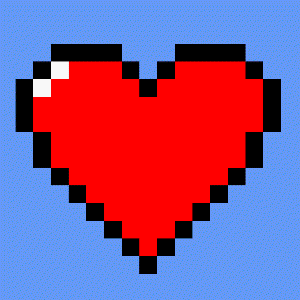
It’s nigh impossible to overstate the importance of the Nintendo Entertainment System in video game history: its popularity pretty much single-handedly revived the home game console market in the US, which had crashed a few years before the NES’s October 18th, 1985 limited-market American debut, while being home to the birth of some of the most iconic franchises still making headlines today.
Odds are that if you were born before 1988, your first home video game experience was with an NES. Even now, 15 years after Nintendo officially put the discontinue kibosh on the console in this territory, those fueled with nostalgia and with the right know-how are still keeping it alive. New, original games as well as retro sequels have been making the rounds this console generation, echoing the 80s revival that has permeated the rest of pop culture in the past years.
Subscribe to Nintendo Life on YouTube841k
The biggest commercial release to play on the 8-bit style synonymous with the NES has so far been Capcom’s Mega Man 9, sequels to the original platforming series that eschewed the series’ Super NES seventh and eighth entries in favor of a return to a simpler, blockier, more nostalgic experience. A smashing success with both fans and critics excited to relive the blue bomber’s glory days, the reception was so positive that Capcom went ahead and made Mega Man 10 in the same style.
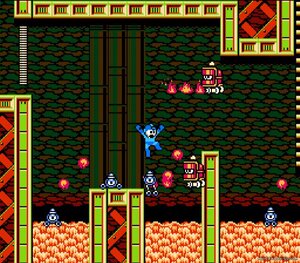
But large studios aren’t the only ones doing 8-bit games; in fact, they’re way late to the party compared to independent developers, who not only have been plugging away at NES-style games for years but are actually programming them in assembly language, the low-level programming language that the NES understands, and getting them to run on original hardware. Some are even selling their wares on cartridges.
Sivak Games’ Battle Kid: Fortress of Peril is one such game, a Mega Man-, Metroid- and I Want To Be The Guy-inspired platformer released in February of this year on cartridge at RetroUSB. The project was a labor of love for 28-year-old Jordan Ordorica, who spent around a year working on what was his fourth homebrew NES game and first stab at making a game with such ambition.
Ordorica is what you might call an old-school gamer. He finds little appeal to modern games, apart from dabbling a bit with Crysis on PC (which he found to be a “good game, but a little short”). He owns a Wii but stays classic, with a library of New Super Mario Bros. Wii, Punch-Out!!, Mega Man 9 and 10 and his eye on La-Mulana.
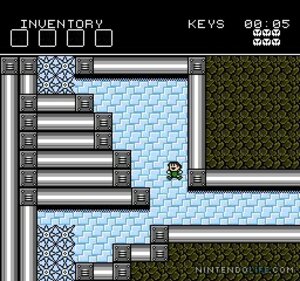
Getting into NES programming was a result of the necessary bits and pieces conveniently falling into place for Ordorica. His return to college in 2006 coincided with his beginning of collecting NES games anew, which in mid-2007 led him to discover an NES port of sudoku, the very first homebrew game sold on RetroUSB. Wonder sparked. Cogs turned.
“I was just so amazed that someone was doing that, and I thought, ‘I want to try my hand at that,’” he said. “Even as a kid I loved the concept of having my game on that system, even though it didn’t ever seem like it would be a reality. I guess I proved myself wrong here.”
Having dabbled a bit in Flash, C++ and Visual Basic since high school gave him enough experience to feel able to take on a course in assembly programming at the University of Toledo, “more or less the concepts of NES programming,” he said. The final project was to make tic-tac-toe. He got an A in the class.

"I actually think I could have not taken the final exam and still gotten an A due to having done all the extra credit parts of the programming projects," he said. "But I took it anyway. There was free food for the exam."
Ordorica’s first NES project outside of class took three months and yielded Geminim, a variation of the mathematical strategy game nim where the goal is to be the player to remove the last gem from the playing field. Siamond, a Simon-type pattern game, followed two months later in a development process that went much faster, “as I had a better idea of what I was doing,” Ordorica said. Both of these were put on one cartridge and sold on RetroUSB, followed by his port of Columns called Mystic Pillars released in November 2008. His childhood self had been proven wrong twice over.
“The NES is interesting to work with but also kind of annoying to work with,” Ordorica said. “You need to be creative with 8-bit architecture.”
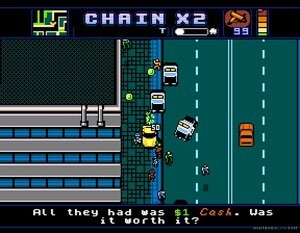
Over in British Columbia, Brian Provinciano of Vblank Entertainment is currently plugging away in their Vancouver office at the upcoming Retro City Rampage, an open-world action parody game coming to WiiWare and not at all NES. For Provinciano, NES is been-there-done-that with regards to his current project: it’s an evolution of Grand Theftendo, a homebrew pet project he started working on in 2002 for NES and not at all WiiWare.
NES development for Provinciano started mostly as a challenge for himself. After going in with nothing and coming out with a development system based on old Sierra adventure games like King’s Quest and Leisure Suit Larry, he turned his eye to the NES as his next conquest.
“It was all about the experience,” he said. “I would throw myself at these huge projects just with the idea that if I finished it then that would mean that I would’ve learned the AI and this and that. […] Making an 8-bit game allows a single person to actually do it because there isn’t as much of the art involved and all of that, so the one-man show was able to happen.”
Provinciano is no stranger to game development, having worked on machines from the DS, PSP, PS2, PS3, Wii and Xbox 360 in his time at Digital Eclipse, Backbone Entertainment, Jet Black Games and Propaganda Games. But to him, there’s just something magical about working on the NES.

“To get goofy about it, as a programmer I just really like the elegance and simplicity of the NES, as well as the fact I enjoyed playing the games on it. It’s basically 56 op codes, or instructions, and then a few things that can be toggled to do the graphics and sound, so it’s really a simple system but the possibilities spiral out from there.”
Even though those constraints may require unforeseen, or even forced creativity to work with, around 2006 he came up with a few ideas that demanded more than what the NES could offer. Grander desires for his game that by now has been in development for eight years informed the switch away from the platform; that and assembly is kind of a pain to work with.
“Developing a game on the NES would mean that it wouldn't have been able to reach the masses,” he said. “It also would've taken even longer to finish as there are 10x more details you must manually handle which you wouldn't otherwise need to on other, more powerful platforms. It also would've had the unavoidable sprite flickering among other things, which add authenticity, yes, but not the good kind. It still feels just as authentic without it and at the end of the day makes it a much more enjoyable experience. […] The fun is more important than whether it's 100% 8-bit authentic or not, right?”

Nostalgia is undoubtedly a hulking driving factor for both players and programmers for 8-bit games in 2010, which seems directly correlated with the growing graphical prowess of modern game machines and the new directions that games have taken. They’re easier. Less precise. They don’t sound as cool.
“Game soundtracks seemed a lot more catchy than they are today,” Ordorica said. “There was more emphasis on challenge versus today where it doesn’t seem as difficult. That’s not the ‘thing’ anymore.”
When Provinciano was working on Sonic Rivals for PSP, he was bothered by its loose feel, that the game didn’t have the pixel-perfect precision of Sonic games of yore. While not in a position to do anything about that on such a large project, Provinciano said he would like to one day do a game like Sonic Rivals but with that retro precision present and accounted for.
Play time and approachability is also a factor.
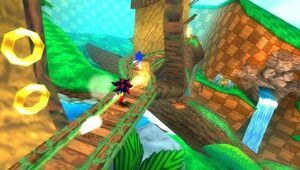
“In this day and age I don’t have 40 hours to invest in a game, and I like the fact that the older games were more pick-up and play,” he said.
Ordorica chalks the revival of 8-bit up in part to the popularity of Cinemassacre’s Angry Video Game Nerd, who reviews and gripes about old games in a way that has captured the attention and adoration of a good chunk of gamers. When debuting their new 8-bit games, both Ordorica and Provinciano were met with overwhelming positivity from an audience who grew up on very large pixels. Facebook statistics show that 93% of people who visit its page are over 18 years old.
“People my age or thereabouts seem interested in the past,” Ordorica said. “When I released the trailer for Battle Kid, people were like, ‘Oh wow, a new NES game, awesome!’”

But to someone whose first console was a Nintendo 64 or PlayStation, the nostalgia factor just isn’t there.
“In the earlier days of the project,” Provinciano said, “when it was more niche, it was more older people, it was unanimously positive. Now that it’s gotten more exposure, a lot more kids have gotten involved in comments and immature stuff on forums. You can’t really please everyone.”
The generation gap became obvious.
“Some of them are like, ‘[Retro City Rampage is] Pokemon meets Saints Row!’” he said.
The appeal of a blocky, difficult, weird-looking game to a younger audience is more dependent on how willing they are to look past appearances. When making a game that is heavily fueled by that nostalgia, it may be a tough sell to someone that doesn’t have that link to the past. But that isn’t to say the appeal is lost on anyone born after the fall of the Berlin Wall.
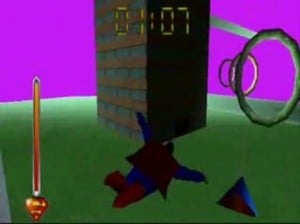
“Some kids will like it, maybe because of an older brother or maybe for the same reasons that people listen to old classic rock,” Provinciano said. “To those who can look past it, I think that, RCR for example, it’s cartoony animation, as simple as it is, is really appealing. Like, guy freaks out and his hat flies off. I think the comic violence can make it appealing to a wider audience.”
Twenty-five years on and people are still developing for the NES. In the year 2020, will nostalgia drive people to develop games for the N64 or PlayStation, or is the NES just such a unique case of right place, right time, right everything? Is primitive 3D enough of a draw that people will want to revisit it?
“As you start getting to the more advanced consoles it seems kind of silly,” Ordorica said. “Why wouldn’t you just make a PC game or a downloadable title? The technology is already there. For the PlayStation you’d be kind of limited, but wouldn’t be anywhere near as limited as the NES so it might not have the same charm.”
Provinciano has trouble playing games of the early 3D era in this day and age, but NES-era graphics give no such woes.
“3D games age horribly,” he said. “We used to play those back when they came out, but now they’re an eyesore. Somehow, the NES games still look nice. But the worst are PlayStation games that used a lot of dithering; at least the N64 used a lot of solid colors so they’re easier on the eyes.
“I guess there are indie games out there that use low-res models, but I don’t think they’re trying to be retro, I think instead they’re focusing on gameplay and budget.”
Twenty-five years of NES. Twenty-five years of happy memories, all-time classics and hardcore creativity. Naturally, that’s something a little special, and that bottle of lightning will not be going anywhere in the hearts of those who lived it. Considering the console’s role in gaming history, these 8-bit love letters to the past are a great way to honor its legacy and preserve the industry’s roots. As long as that love is strong, the NES will never die.





Comments 20
Hey, don't dis Superman 64, that was one of the best ga-
Okay, I can't carry on without potentially being sick.
LOL @ the Superman 64 pic.
I remember when I first read about Battle Kid. I was seriously tempted to buy it because I enjoyed the *ss-kicking I received from IWBTG.
Nice article
"I actually think I could have not taken the final exam and still gotten an A due to having done all the extra credit parts of the programming projects," he said. "But I took it anyway. There was free food for the exam."
What...? He could have not taken the exam and he got free food.
He must have had a pretty lenient school (for a university) and a very nice prof.
Oh Hey, SuperMan64 on an emulator.
I was knee-high to my bro who was 9 years older than me and the arcades was his stumping ground... I'm glad I got into my groove during the NES years. There was enough power in a home console to go beyond blocky characters and bland backgrounds yet the gameplay was simple enough that no game was un-approachable at least. In fact, few games today give me that true feeling of accomplishment like those days. Nothing like playing a game with no saves, so many lives, so many deaths that send you back to the beginning, and then that one day comes, where you figure out that uber-rediculous pattern of a final boss to win... memories, memories.
very cool feature
great article.
i got battle kid, and as ive said on here before there is a sequel in the works now!
this is the only new/old game i have
Nice article. I'm glad people are still programming for all these older game systems, like all the groups making new ZX Spectrum stuff (over here we had those instead of NES).
But there's a whole homebrew scene working on modern consoles and some of the stuff coming out is really good. No matter what Nintendo's stance is on hombrew right now, it'd be nice for you to single out some of the best stuff and post about it too.
Consider the fact that in 20 years, if Nintendo has their way, projects like what we're seeing for the NES will be impossible for homebrewers to develop...
Maybe it's because my first console was a Sega Genesis (despite being old enough to have played on friends' NESes during its lifespan), but I feel that 16 bit homebrew is better (although I have yet to search for any). The 16 bit generation is still old enough to have a very similar gaming style and "retro feel" compared to the 8 bit generation (and with minimal exceptions had yet to venture into 3D), yet those systems are significantly more powerful with much more attractive graphics.
Great article. I hove homebrew gaming and its cool to see it getting featured here. Wasn't even sure if retro city rampage's origins would be looked at here so this article was a very pleasant surprise.
Atari has some great homebrew too.
Excellent article. It kind of makes me sad to see pixels go the way of the dodo... here's to hoping that games can still maintain that spark, though...
@mjc0961 That's part of the joke
Both the NES and SNES have aged decently though it depends on your TV. I've got a 14" screen that I can run with S-Video or even RGB and it really makes NES & SNES games shine. These games weren't designed for their pixels to be so prominent, they relied on the softness of the old CRT screens to soften the pixels.
3D does age badly though I still like a lot of N64 games and people do feel nostalgic for newer systems if they grew up with them.
Yeah I agree with everything and thought it was a very good feature to read. Even more so that I know everything being talked about, and how I visit cinemassacre and screwattack that shows Battle Kid and such. I think in another 10 years, kids will look back to the SNES and N64 more so, because I've noticed my brother (age 18, three years younger than me at 21) and his friends always seem to have lots of nostalgia trips with the N64 more so than the SNES or NES at all. At 16-18 They act at times very much like someone who is aged 25-30 would with their nostalgic system of choice.
I can't wait to play Battlekid, Retro City Rampage, and really dive into Mega Man 9 and 10 (the later of which I've never played) some day.
I wish there were a way outside of actually buying the NES cart to play Battle Kid...my NES has a broken part and I can't play it Game looks awesome...but alas, looks like I can't supports Suzak
Retro City I'm not quite as interested in, but I still wanna see how it turns out.
@ Swerd_murd:
Ya know...if you searched a version of your statement formed as a question...you might find what you're looking for...
/hope mods don't hear
Great weather isn't it? Have a nice day! lol
Has anyone made an FPS for the NES? Now that would be difficulty, right there!
How do Indie developers get their games on carts? I've never seen any type of adapter (Besides the Retrode 2) for plugging in the carts to the PCs they would be developing it on.
Show Comments
Leave A Comment
Hold on there, you need to login to post a comment...